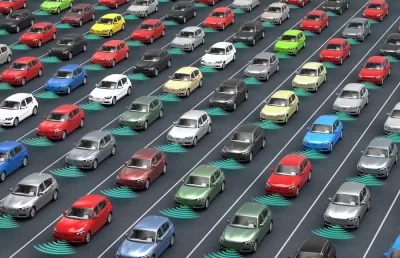Self-driving cars are likely to become part of the urban landscape in the future, and they have the potential to drastically alter urban environments—in good and bad ways.

"Unless cities pay close attention to how self-driving cars will shape their futures, experts say, they could easily repeat, and exacerbate, mistakes of the past," writes Katherine Shaver.
Widespread use of autonomous vehicles will not happen, realistically, for at least a couple decades, say experts. But planners, designers, and architects are thinking ahead to how the new technology could change land use and travel patterns, says Shaver.
"For example, because driverless vehicles will drop off passengers and move on, prime real estate now consumed by vast parking lots and unsightly garages could be freed up for more housing, parks, public plazas and open space, planners say," writes Shaver. In addition, streets would open up, making room for bike lanes and wider sidewalks.
Still, many questions remain about the long-term impacts of self-driving vehicles, with some predictions suggesting that they will not solve the parking, housing, and transportation problems of cities. If these vehicles make car travel easier, people might travel more, eschew transit, and decide to live farther out, with the result being increased sprawl.
"Even so, some planners are considering ways that governments could discourage such behavior, for example, via a per-mile tax to make driverless vehicle passengers feel and bear the costs of longer trips. Such a tax, supporters say, also might discourage empty vehicles from adding to traffic congestion by roaming streets in search of passengers," notes Shaver.
FULL STORY: City planners eye self-driving vehicles to correct mistakes of the 20th-century auto

Planetizen Federal Action Tracker
A weekly monitor of how Trump’s orders and actions are impacting planners and planning in America.

Chicago’s Ghost Rails
Just beneath the surface of the modern city lie the remnants of its expansive early 20th-century streetcar system.

San Antonio and Austin are Fusing Into one Massive Megaregion
The region spanning the two central Texas cities is growing fast, posing challenges for local infrastructure and water supplies.

Since Zion's Shuttles Went Electric “The Smog is Gone”
Visitors to Zion National Park can enjoy the canyon via the nation’s first fully electric park shuttle system.

Trump Distributing DOT Safety Funds at 1/10 Rate of Biden
Funds for Safe Streets and other transportation safety and equity programs are being held up by administrative reviews and conflicts with the Trump administration’s priorities.

German Cities Subsidize Taxis for Women Amid Wave of Violence
Free or low-cost taxi rides can help women navigate cities more safely, but critics say the programs don't address the root causes of violence against women.
Urban Design for Planners 1: Software Tools
This six-course series explores essential urban design concepts using open source software and equips planners with the tools they need to participate fully in the urban design process.
Planning for Universal Design
Learn the tools for implementing Universal Design in planning regulations.
planning NEXT
Appalachian Highlands Housing Partners
Mpact (founded as Rail~Volution)
City of Camden Redevelopment Agency
City of Astoria
City of Portland
City of Laramie





























